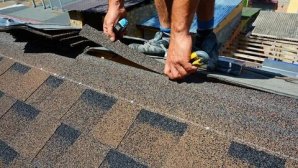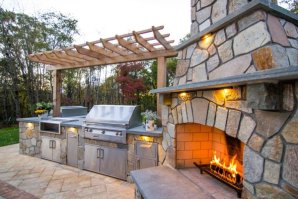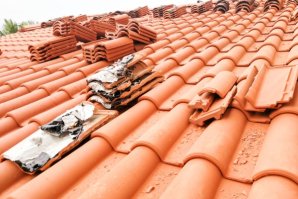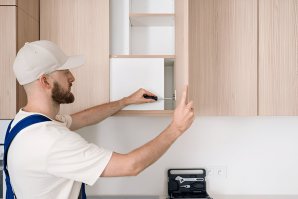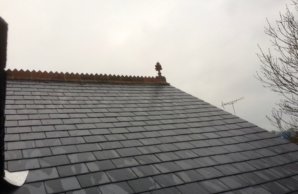There’s something oddly comforting about sunlight spilling through open windows. It feels clean, warm, alive. But that same sunlight—more specifically, the UV rays hiding inside it—slowly eats away at the little things that protect a home. One of those quiet victims is the screen mesh. It’s always there, stretched tight, holding back bugs and dust, and letting air through. Over the years, though, the sun wears it thin. Professionals offering Inglewood screen mesh replacement services know exactly what sunlight does to mesh—they see it every day. The fibers weaken, the color fades, and suddenly it doesn’t look or work the way it used to.
Inglewood Screen Mesh Replacement Services and UV Exposure
It’s funny how something as simple as sunlight, which gives life, can also quietly break things down. The UV rays don’t scorch the mesh all at once—they keep nudging at it. Every day adds up until one morning, a small tear appears, or the screen feels rough instead of smooth. The fibers that once felt tight and springy now crumble with a light touch. Professionals offering screen mesh replacement services often talk about how gradual this process is. They’ve seen fiberglass turn chalky, polyester lose its shape, and aluminum lose its shine. It’s not dramatic; it’s just time doing what it does best—wearing things out.
|
Material Type |
UV Resistance |
Visible Damage Over Time |
|---|---|---|
|
Fiberglass |
Moderate |
Cracks, brittle surface |
|
Polyester |
Good |
Loss of stretch, dullness |
|
Aluminum |
Excellent |
Color fading, corrosion |
Sunlight doesn’t discriminate; it just works slowly and thoroughly.
Maintenance Routine That Works
It doesn’t take a strict schedule—just consistency. Clean the screens every few months, especially before summer and after pollen season. Use mild soap, rinse well, and let them dry naturally. While you’re at it, check the edges. If the mesh feels loose or the spline’s slipping, fix it right away. A little habit goes a long way. A quick cleaning here, a small repair there. No one loves maintenance, but it’s easier than replacing entire frames. Because of the good work of professionals offering Inglewood screen mesh replacement services, the screens stay tighter, cleaner, and far more reliable against heat, dust, and the bugs that always find their way in.
How UV Rays Change Material Structure
It’s strange to think that something invisible can change the structure of solid material. But UV rays do exactly that. They mess with the bonds that keep the fibers strong. First, the coating that holds everything together starts to break down. Then the fibers lose moisture and flexibility. What used to stretch bounces less and finally snaps. At first, there’s barely any sign of damage—just a dull color or a slightly rougher feel. Over months, though, the screen stiffens. Cleaning can help delay it, sure, but once the structure starts breaking down, it never really goes back. It’s like skin that’s been out in the sun too long—dry, tight, and fragile.
Recognizing Early Signs of UV Damage
There’s usually a moment when someone runs a finger across their window screen and feels that powdery texture. That’s UV damage, plain and simple. It sneaks in quietly, showing up as:
- Fading color that looks uneven in the light
- Loose edges where the mesh used to sit tight
- Tiny frays that catch on your hand
- Sagging that doesn’t go away even after cleaning
These are small warnings, but they mean the screen is tired. Keeping an eye out for these signs helps avoid full replacements. It’s easier—and cheaper—to fix a small section than replace everything once the sun’s had its way.
Climate’s Role in Screen Durability
Not all sunlight is equal. A screen in Arizona lives a much harder life than one in Oregon. Constant heat and dry air bake the fibers faster, while humid areas soften them differently. Over time, both lead to the same thing—wear and weakness. Experts providing Inglewood screen mesh replacement services understand how different climates affect screen longevity and always recommend materials that match local weather conditions. Aluminum handles strong, direct sunlight best. Polyester performs well in moisture-heavy air. Fiberglass works in mild climates but deteriorates quickly under constant heat. The local environment quietly decides how long each screen will last.
Simple Ways to Extend Screen Life
There’s no magic fix for sun damage, but little habits make a big difference. Some people wash their screens with whatever’s handy, but gentle cleaning works better. Soap, water, and a soft brush—nothing fancy. Dirt holds heat, so getting it off helps more than most realize.
Other habits matter too:
- Add some shade. Even partial covering helps.
- Use UV-protectant spray. A few minutes of care buys years of life.
- Rotate screens. Swap sides once or twice a year if possible.
Small steps, but over time, they stretch out the lifespan. The goal isn’t perfection—it’s prevention.
The Value of Preventive Care
Preventive care doesn’t sound exciting, but it’s one of those things that keeps everything else running smoothly. When screens hold up, air moves better, rooms stay cooler, and energy costs drop a bit. It’s not about perfection—it’s about keeping things comfortable without constantly fixing or replacing. Caring for the mesh regularly also means catching small issues before they spread. A little hole grows fast once UV rays hit weakened fibers. Cleaning, checking, and adjusting tension—those few minutes save hours later. It’s quiet, steady maintenance that pays off over the years.
Conclusion
Sunlight isn’t the enemy—it’s just relentless. Understanding how it works gives people control over how their homes age. With time, everything fades, but that doesn’t mean it has to fall apart. A little attention and help from professionals providing Inglewood screen mesh replacement services make sure those protective screens keep doing their job. In the end, B&B Glass, LLC reminds homeowners that maintenance isn’t just about fixing what’s broken—it’s about keeping the everyday comforts intact. Screens might seem small, but they shape the feeling of a room: open, airy, connected to the outside without letting it take over. Protecting that balance matters more than most realize.










